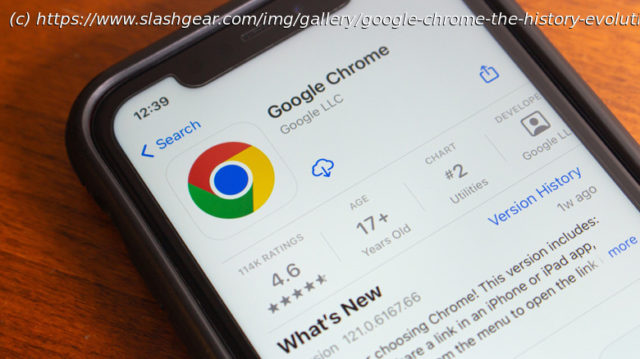Google Chrome is the dominant web browser on the market by a wide margin. Let’s take a look at how it got there and how it has changed over the years.
Ah, the humble internet browser. So crucial to our experience of the internet, yet so easy to take for granted. Let’s be real, how many of us really think about our choice of web browser these days? If you don’t settle for the default browser provided by your operating system, then the first thing you likely do when setting up a new device is to download Google Chrome. It’s fast, it’s free, and it’s convenient — what’s not to like?
Still, Google’s ubiquitous internet browser wasn’t always the dominant force it is now. Sure, its popularity may make it seem like the browser was always a fixture of the internet, but that’s far from the truth. It may seem impossible to imagine in a world where the majority of internet users opt for Chrome, but there was a time when Internet Explorer (IE) ruled the roost. Chrome, on the other hand, was the new kid on the block, trying to catch up to the big names and offer users something different.
From its early days to its ascendancy and culminating in its market dominance today, Chrome has taken quite a journey to reach its current stature. If you’ve ever wondered how things got the way they are today, then this look back at the birth, growth, and evolution of Google Chrome is for you.Before Chrome (early-mid 2000s)
In the years immediately preceding Google Chrome, there was really only one name in town — Internet Explorer. Microsoft’s browser had seen off the once dominant Netscape Navigator during the first browser war, its victory allowing it to amass an astounding 95% of the browser market share in 2004. Such was Microsoft’s dominance that it became the de facto internet browser for web development, kicking off an age of IE-focused web development and, in Ars Technica’s words, „further perpetuating Microsoft’s ecosystem lock-in.“
Thankfully, Microsoft’s utter dominance of the browser world was somewhat short-lived. Mozilla’s Firefox launched in November 2004 and would slowly eat away at Internet Explorer’s market share. While Firefox certainly helped push internet browsers forward — it popularized features like an integrated pop-up blocker and tabbed browsing — it never quite managed to break through Microsoft’s dominance. Firefox’s pre-Chrome market share peaked at 32% in August 2008, which, while not insignificant, still left Microsoft with the majority of the browser market.
Opera and Apple’s Safari were also around, but neither was all that popular, with a combined share of well below 10% of the browser market during this period. The mid-late 2000s browser market, then, was a two-horse race between Internet Explorer and the up-and-coming Firefox. However, that would soon change when a third name entered the picture.Chrome debuts (September 2008)
Google threw its hat into the browser ring in September 2008, launching the Google Chrome beta alongside a charming and very informational web comic that explained the thinking behind the new browser, which included an extension-friendly architecture that many of us now couldn’t live without. Google also released Chromium alongside it, which was and continues to be the open-source codebase for Chrome sans Google-specific integrations.
In an announcement on the Official Google Blog, the corporation pitched its new offering as a „fresh take on the browser.“ It included new features like sandboxed tabs — which prevented tabs from crashing each other — alongside improvements such as the V8 JavaScript engine, which offered better performance. Chrome also introduced UI and UX elements that have now become standard on all browsers — partly because a few of its rivals have now moved to the same codebase — such as having tabs on top of the dual-purpose address bar, detachable tabs, and a home page that showed thumbnail views of the most recently-visited pages.
It wasn’t just the novelty of these features that appealed to the tech press at the time. Google packaged all this in a delightfully minimalist design that stood out from the crowd, especially compared to the fussy UIs of Firefox 3.0 and Internet Explorer 7. Contemporary reviews loved the Chrome beta, with The Tech Herald calling it „a nice break from tradition.“ TechCrunch went even further in its praise, calling it a „superb“ package that „understands what you really want to do with a browser.“The browser landscape slowly shifts (2009)
Google’s browser development team worked at a furious pace over the rest of 2008, adding missing features — such as a bookmark manager, which came to the beta in November — before exiting beta and launching the 1.0 version in mid-December that same year.
Moving quickly to bring feature parity to Chrome and launch a stable version proved to be something of a masterstroke: Chrome’s browser share climbed steadily over its first full year as a stable release, culminating in an impressive 5.38% by the end of 2009, Chrome’s ascendance came almost singularly at the cost of Internet Explorer, too. While Firefox and other browsers retained their market share (or grew slightly), Microsoft’s once-dominant browser had dropped to 55% of the market by the end of 2009, a loss of nearly 10% from the start of the year.
Gaining 5% of the market was no mean feat for a fresh browser.






